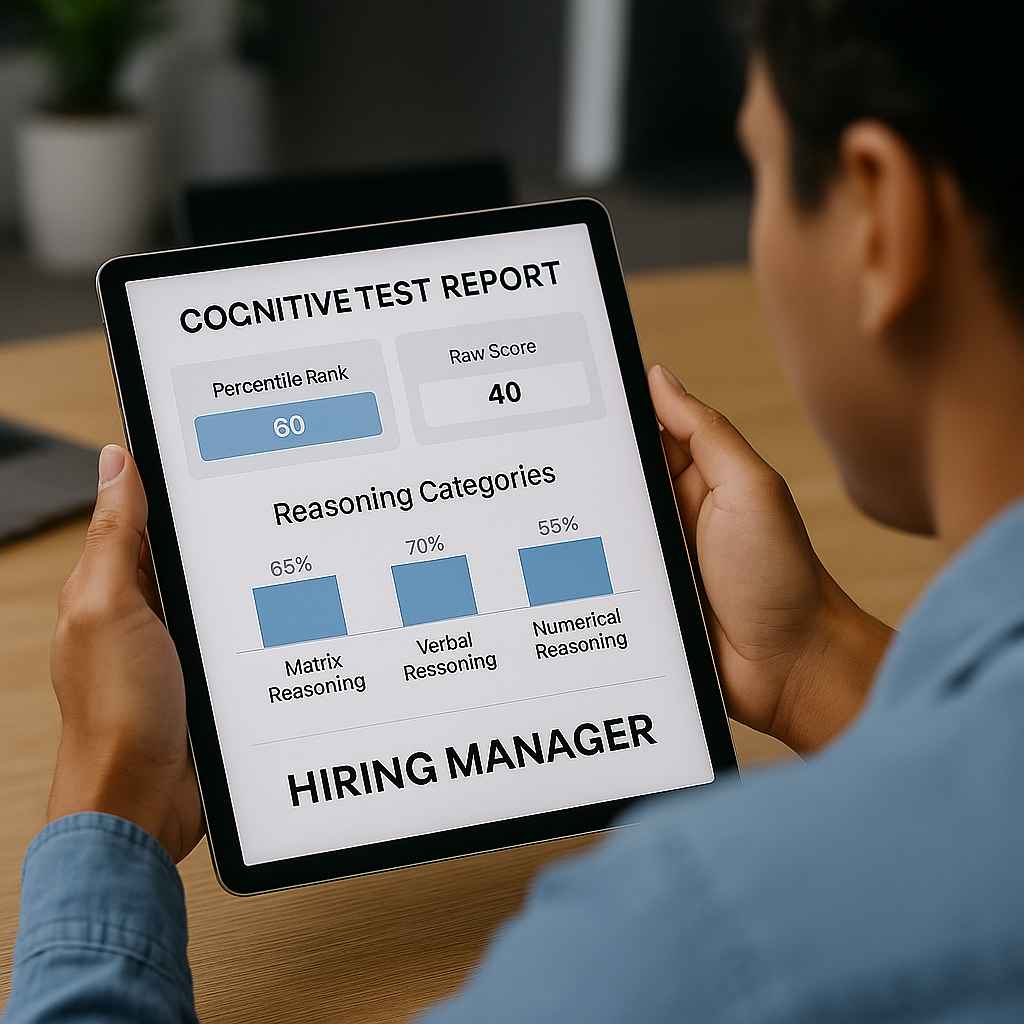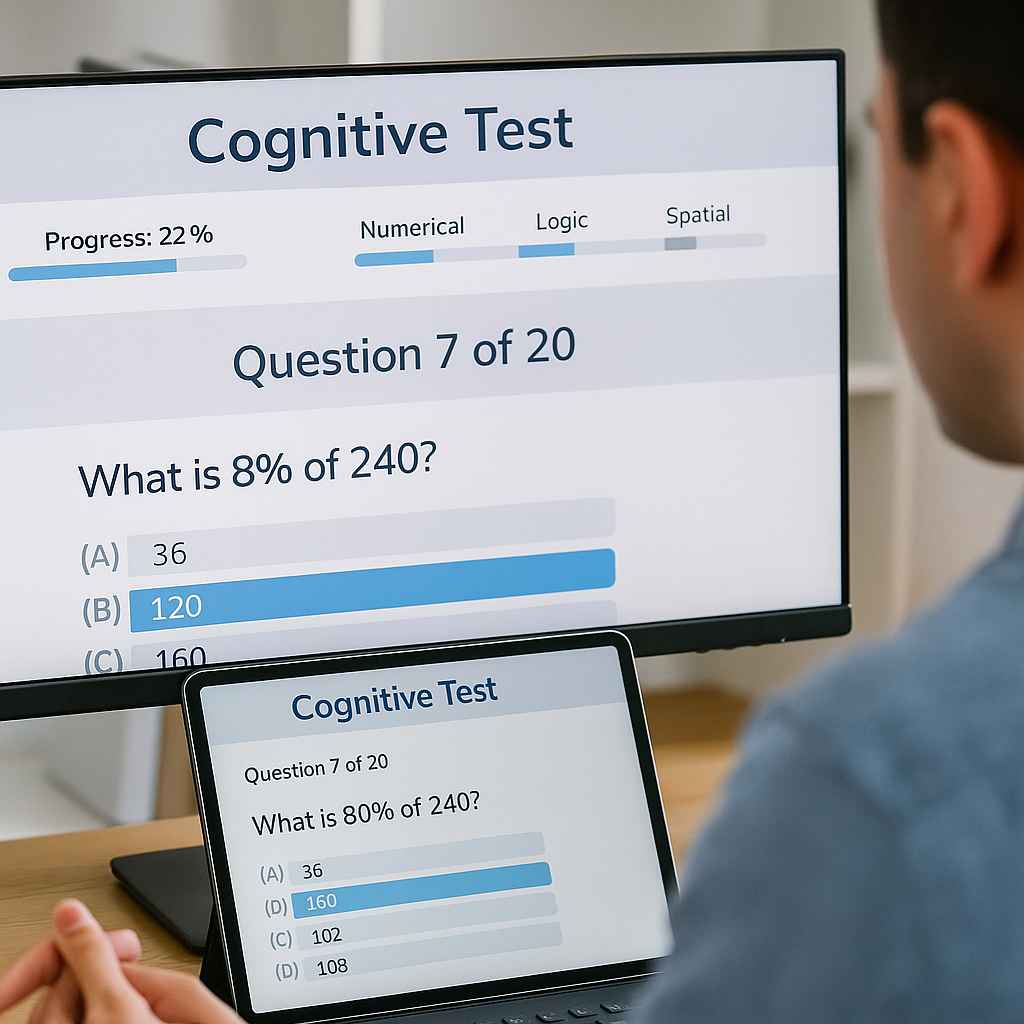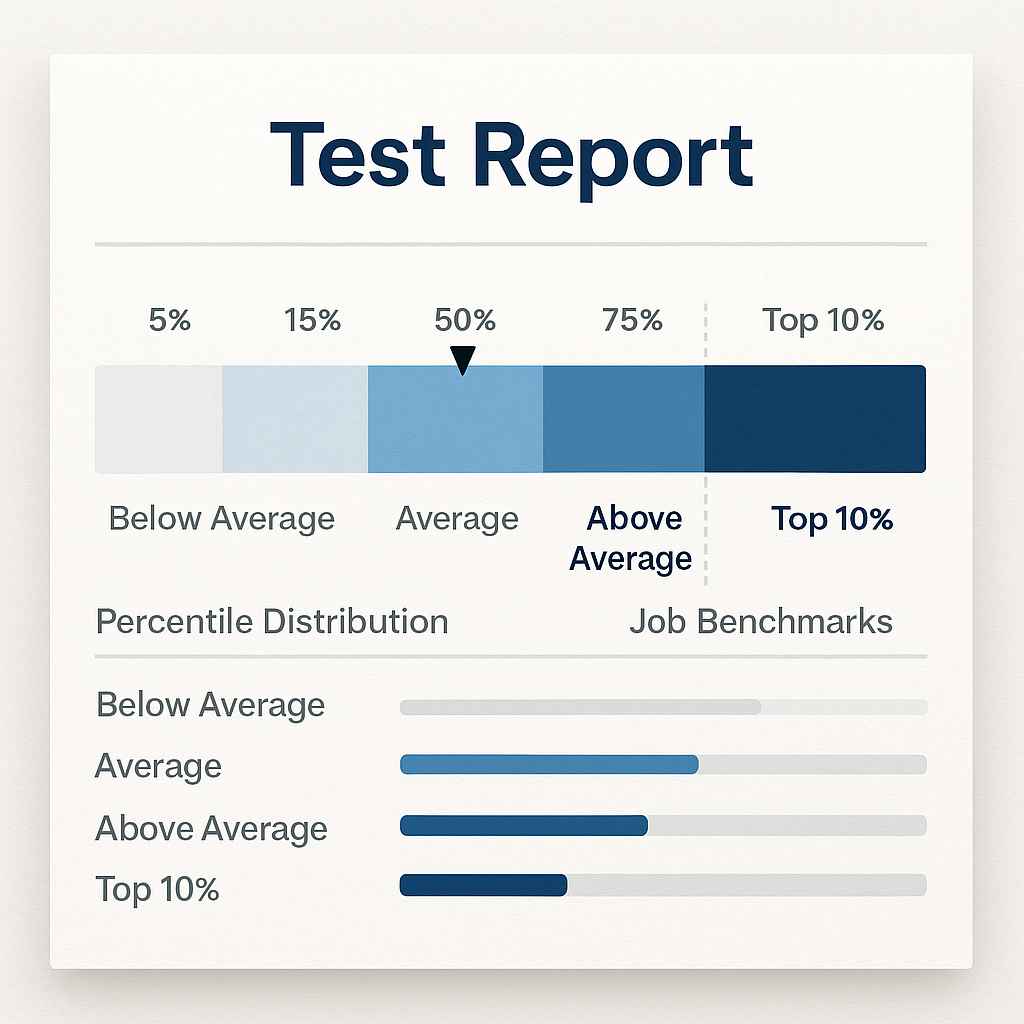Content
You’ve given a candidate a cognitive test, and now you’re staring at a score report thinking… “Okay, but what does this actually tell me?” That’s a common question. Cognitive assessment scores can be incredibly useful—if you know how to read and apply them. The problem is, many recruiters and hiring managers aren’t sure what the numbers mean or how to compare them across candidates.
This blog breaks it all down in plain language:
✅ What cognitive test scores really measure
✅ How to interpret percentile scores, raw scores, and benchmarks
✅ What good scores look like (and what to watch out for)
✅ How to use scores confidently in your hiring decisions
Let’s decode the data and help you make smarter, faster, and fairer hiring calls.
What Are Cognitive Assessment Scores?

Cognitive assessments measure how well someone thinks—how they solve problems, recognize patterns, remember information, and reason logically.
The score is your snapshot of that performance.
You’ll typically see results presented in a few common formats:
- Raw Score: The number of correct answers out of total questions
- Percentile Rank: How the candidate performed compared to others
- Standard Score: Normalized across a set population (often with a mean of 100)
- Subscores by category: Like verbal reasoning, numerical logic, or pattern recognition
These results help employers evaluate whether a candidate is likely to succeed in a role, especially one that requires mental agility, decision-making, or complex problem-solving.
If you’re new to the idea of cognitive testing, the Cognitive Ability Tests for Employment: A Complete Guide will give you a helpful overview of what they are and when to use them.
Score Interpretation: What Do the Numbers Mean?
Understanding score interpretation starts with context. A high score isn’t always “great” if it doesn’t match what the job needs, and a mid-range score might be exactly right for the role.
Here’s how to decode common score types:
🎯 Percentile Score Meaning
| Percentile Rank | What It Indicates |
| 90–99 | Top performer. High-level reasoning skills |
| 70–89 | Strong performance. Ready for most roles |
| 50–69 | Average ability. Adequate for many jobs |
| 30–49 | Below average. May struggle in complex roles |
| Below 30 | Needs support or not a fit for high-demand roles |
Percentile ranks are most useful when comparing candidates, especially in high-volume hiring.
🧠 Raw and Subscores
Let’s say your cognitive test includes 4 categories:
- Verbal reasoning
- Numerical reasoning
- Logical reasoning
- Memory/attention
A breakdown might look like this:
| Skill Area | Raw Score | Interpretation |
| Verbal Reasoning | 8/10 | Strong understanding of written logic |
| Numerical Reasoning | 5/10 | Average math fluency |
| Logical Reasoning | 9/10 | Excellent pattern recognition |
| Attention to Detail | 4/10 | May struggle with repetitive accuracy |
This helps tailor your decision to how a person thinks, not just whether they scored “high.”
You’ll find similar score formats used in assessments like Matrix Reasoning or Numerical Reasoning tests, which break thinking into measurable traits.
What Is a “Good” Score?

The answer depends on the role.
Some jobs require top-tier cognitive performance (e.g., software engineering, strategy), while others prioritize consistency, communication, or reliability more than mental gymnastics.
Here’s a general guide:
| Job Type | Ideal Score Range |
| Leadership & Strategy Roles | 80th percentile and above |
| Data & Tech Positions | 70th percentile and above |
| Customer Service & Admin | 50–70th percentile |
| Entry-Level or Trainee Roles | 40–60th percentile (learning potential matters more) |
If you’re using a Cognitive Ability Test, combine this score with other assessments, like structured interviews or work samples, for a complete picture.
Using Scores in the Hiring Process
It’s easy to over-rely on numbers. But cognitive scores are most effective when used as part of a bigger decision-making system.
Here’s a simple way to integrate them:
- Early Screening: Use percentile thresholds to cut unqualified applicants fast
- Role Fit Matching: Compare subscores to specific job demands (e.g., math-heavy vs. verbal-heavy roles)
- Final Interviews: Use scores to tailor interview questions (e.g., challenge lower areas or confirm high ones)
- Team Fit Decisions: Combine with behavioral or personality results for cultural fit
Many recruiters pair quick testing tools with structured interviews, as discussed in Top Cognitive Assessment Interview Questions to Ask Candidates.
When Scores Don’t Tell the Whole Story

Sometimes a candidate scores low, but nails the interview. Or vice versa. That’s why score interpretation requires context and judgment.
Here’s what to consider:
- Did they complete the test in a distracting environment?
- Are they more of a hands-on learner who doesn’t test well?
- Is this a role where communication matters more than IQ?
In fact, recent research published on ScienceDirect highlights that certain cognitive traits—especially when linked to mental health and situational variables—can influence test performance in unexpected ways. This reinforces the importance of interpreting scores alongside other behavioral and environmental cues.
You’ll get stronger hiring outcomes when combining test results with insights from Cognitive Behavioral Assessments, resume analysis, and real-world simulations.
Related Pages
- What Is Cognitive Assessment? Meaning, Uses, and Examples
- Cognitive Assessment Examples: Real Questions & Use Cases
- Quick Cognitive Assessments: When & How to Use Them
- Top Cognitive Assessment Tools for Hiring Success
- Short Cognitive Assessments: Efficient Tools for Fast Screening
- Pre-Employment Cognitive Assessments: What Recruiters Need to Know
- How Much Do Cognitive Assessments Cost? A Practical Overview
FAQ
What’s the difference between a percentile and a raw score?
A raw score is how many answers were correct. A percentile shows how a candidate performed relative to others (e.g., 75th percentile means better than 75% of test-takers).
Is there a pass/fail threshold?
Usually no. Cognitive tests are norm-referenced, meaning there’s no universal “pass” mark. It depends on your benchmark and the job requirements.
Can candidates improve their scores?
Slightly, through practice. But cognitive assessments are designed to measure natural ability, not memorized content.
Should I share scores with candidates?
Not unless you have a good reason and the scores are well-explained. Misunderstanding results can lead to confusion or disengagement.
Final Thoughts
Cognitive assessment scores are more than just numbers—they’re powerful predictors of how a candidate thinks, learns, and performs on the job.
But the real value comes when you understand what the scores mean, how to interpret them fairly, and how to apply them strategically in hiring.
Whether you’re evaluating a tech lead, an analyst, or a customer support trainee, the right interpretation turns test data into smarter decisions.
👉 Book a free demo to see how our scoring reports and test dashboards make it easy to interpret results and hire with confidence.
